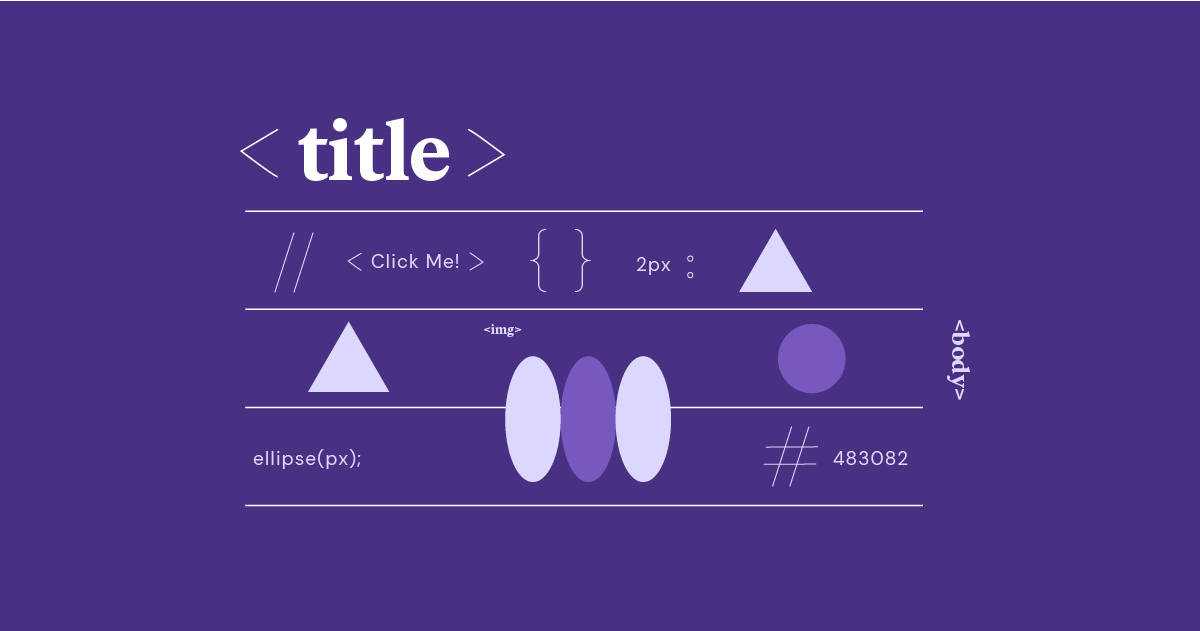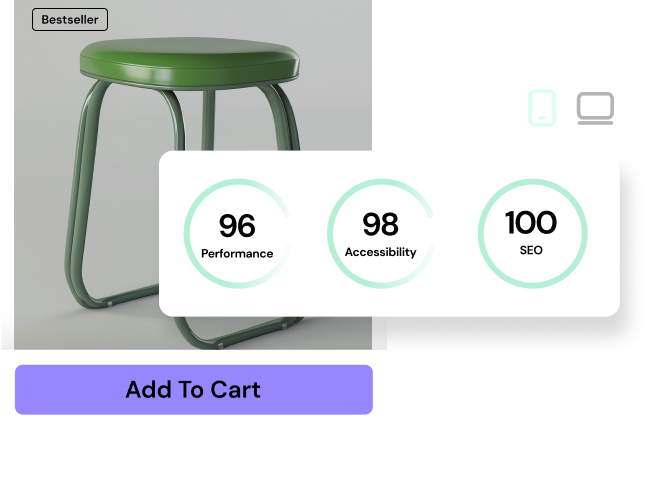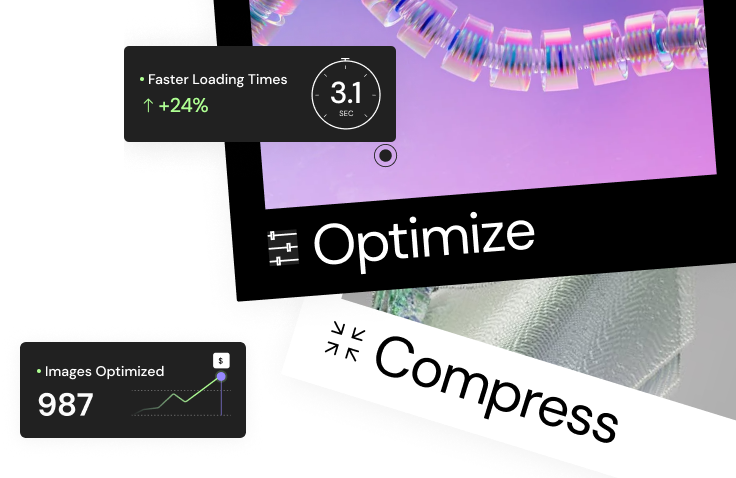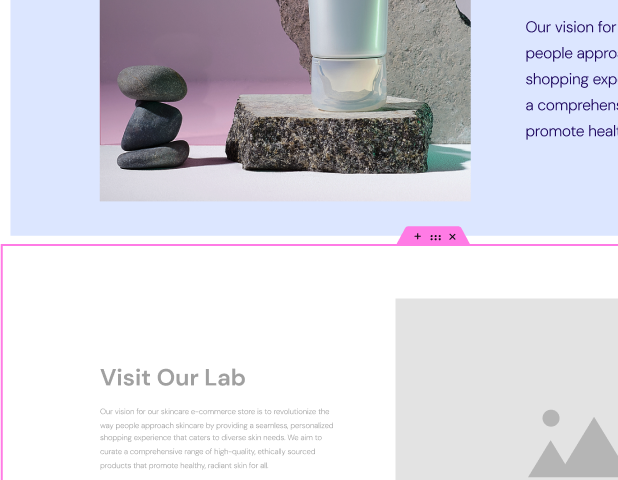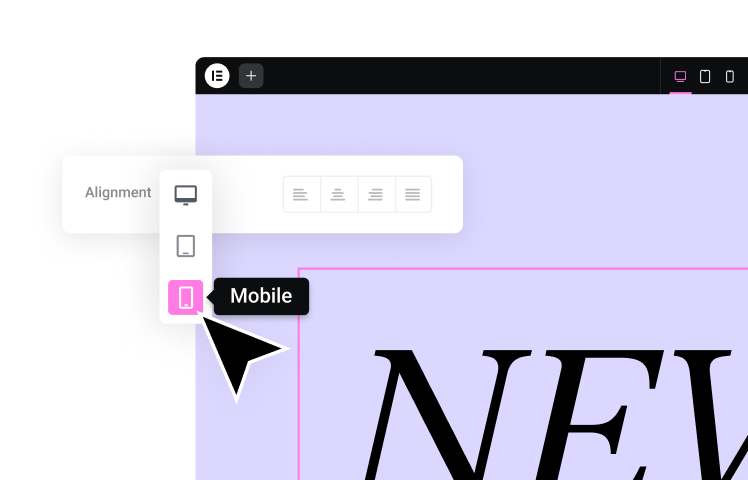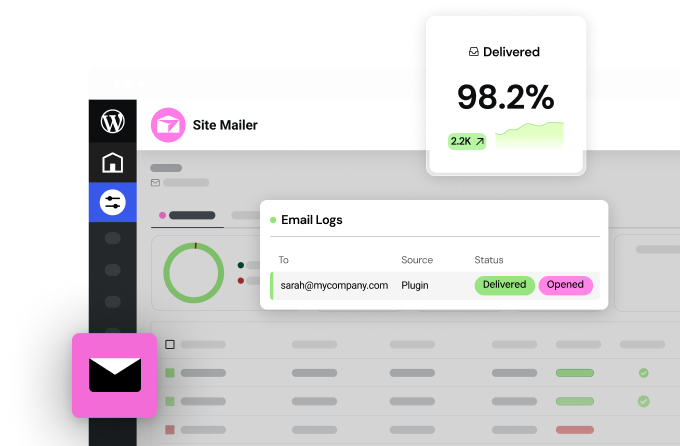Table of Contents
Whether you’re a seasoned web developer or just starting with WordPress, this guide will arm you with everything you need to know about adding images in HTML. We’ll cover the fundamentals and optimization best practices and even explore advanced techniques to level up your website’s visual appeal. If you use the Elementor website builder, you’ll discover how it simplifies the entire image-handling process!
Understanding the HTML Image Tag
The <img> Tag
The foundation of displaying images on a web page lies in the <img> tag. This tag acts as a placeholder, instructing the browser where to find and display the image you specify. Here’s what a basic image tag looks like:
HTML
<img decoding="async" src="https://elementor.com/cdn-cgi/image/f=auto,w=400,h=300my-image.jpg" alt="A descriptive caption for the image">
Let’s break down the key components of this tag:
<img>
This tells the browser you want to insert an image. It’s a self-closing tag, meaning you don’t need a separate </img> to close it.
src
This essential attribute stands for “source.” It’s where you specify the image file’s location, which can be a relative or absolute URL:
- Relative URL: Points to an image within your website’s directory. Example: src=”images/my-image.jpg” (assumes an “images” folder exists)
- Absolute URL: Provides the complete web address of the image, even if it’s located on a different website. Example: src=”https://www.example.com/images/my-image.jpg”
alt
This attribute stands for “alternative text.” It provides a crucial description of the image’s content. The alt attribute is vital for:
- Accessibility: Screen readers rely on alt text to describe the image to visually impaired users.
- SEO: Search engines use alt text to understand the image’s relevance, potentially improving your website’s ranking.
- Image Load Failure: If the image cannot be displayed for some reason, the alt text will appear in its place.
The Importance of the Alt Attribute
While the src attribute tells the browser what image to display, the alt attribute describes the image’s meaning. Here’s how to write effective alt text:
- Be Descriptive: Convey the image’s essence clearly and concisely.
- Context is Key: Consider the image’s role within the surrounding content.
- Keep it Short: Aim for a brief sentence or a few words.
- Avoid Redundancy: Don’t start with “Image of…” or “Picture of…”. Screen readers already announced that.
Image File Formats and Optimization
Common Image Formats
Choosing the right image format is essential for balancing visual quality with file size, which directly influences your website’s speed. Here’s an overview of the most common web image formats:
JPEG (or JPG)
It is best for photographs and images with complex colors and gradients. It supports millions of colors and uses lossy compression, meaning some image quality is sacrificed to reduce file size.
PNG
It is excellent for graphics, illustrations, logos, and images where transparency is required. It supports both lossless (original quality) and lossy compression. PNG file sizes tend to be larger than JPEGs.
GIF
It is primarily used for simple animations and supports a limited color palette. Due to file size constraints, it could be better for static images.
SVG
Scalable Vector Graphics, an XML-based format, is perfect for logos, icons, and illustrations. Its main advantage is that it scales infinitely without losing quality, making it ideal for responsive websites.
Choosing the Right Format
Here’s a quick decision guide to selecting the appropriate image format:
- Photographs: JPEG is usually the best choice.
- Graphics, Logos, and Illustrations with Transparency: Opt for PNG.
- Icons, Simple Graphics Needing Scalability: Choose SVG.
- Simple Animations: GIFs might be the only option, but consider modern video formats for better file sizes.
Image Optimization
Regardless of the chosen format, optimizing your images is crucial for maintaining a fast-loading website. The goal is to strike a balance between preserving sufficient image quality and minimizing file size as much as possible. Here’s why image optimization matters:
- Page Speed: Large images are one of the biggest culprits of slow-loading websites, negatively impacting the user experience.
- SEO: Google and other search engines favor fast-loading websites, meaning poorly optimized images can hurt your rankings.
Optimization Techniques
Compression
There are two main types:
- Lossy: Sacrifices some image data to achieve smaller file sizes. Use carefully to avoid noticeable quality degradation.
- Lossless: Reduces file size without altering the image data, perfect for scenarios where quality is paramount.
Image Resizing
Ensure your image dimensions match how they’ll be displayed on your website to avoid unnecessarily loading oversized images.
Image Optimization Tools
Many tools and plugins can help you optimize images:
- Elementor Image Optimizer: If you’re using the Elementor website builder, this built-in tool simplifies image optimization for your WordPress site.
- Image Editing Software: Photoshop, GIMP, and others offer advanced optimization controls.
Image Styling and Responsiveness
Setting Image Dimensions
Control the width and height of your images for a polished look. You can do this directly within the HTML using the width and height attributes or with CSS for more flexible styling. Here’s an example:
HTML
<img fetchpriority="high" fetchpriority="high" decoding="async" src="my-image.jpg" alt="A beautiful sunset" width="400" height="300">
Always specify the image dimensions. This helps the browser allocate the correct space as the page loads, preventing content shifts and improving the user experience.
Basic CSS Styling
Go beyond the basics with CSS to add more elaborate styling to your images:
CSS
img {
border: 2px solid black; /* Adds a border */
border-radius: 10px; /* Creates rounded corners */
box-shadow: 5px 5px 10px gray; /* Adds a shadow effect */
opacity: 0.8; /* Makes the image slightly transparent */
}
Responsive Images
In today’s multi-device world, making your images responsive is essential. Responsive images fluidly adapt their size to different screen sizes, ensuring a seamless viewing experience for everyone. Here’s a couple of common techniques:
- max-width: 100%: This simple CSS rule ensures images will never exceed their container’s width, scaling down proportionally on smaller screens.
CSS
img {
max-width: 100%;
height: auto; /* Maintain aspect ratio */
}
- srcset Attribute: This attribute provides the browser with multiple image file options at different sizes, allowing it to choose the most appropriate one based on the user’s device.
HTML
<img decoding="async" srcset="my-image-small.jpg 480w,
my-image-medium.jpg 800w,
my-image-large.jpg 1200w"
src="my-image-medium.jpg"
alt="A responsive landscape photo">
Aligning Images
Control how your images interact with surrounding text and elements using CSS or the HTML float property. Here’s how to align images left, right, and center:
- Left Alignment: float: left; or text-align: left;
- Right Alignment: float: right; or text-align: right;
- Center Alignment: display: block; margin-left: auto; margin-right: auto;
Advanced Image Techniques
Creating Image Links
Turn any image into a clickable link that takes users to another page on your website, a different website, or even a specific section on the current page. Here’s how to do it using the <a> tag:
HTML
<a href="https://www.example.com" target="_blank" rel="nofollow" >
<img decoding="async" src="banner-image.jpg" alt="Click here to learn more">
</a>
Tips for Image Links
- Provide Context: Either within the image’s alt text or with surrounding text, let users know where the link will take them.
- Visual Cues: styling changes on hover, like a slight border or color change, can indicate that an image is clickable.
Background Images with CSS
Add visual flair to your website by using images as backgrounds for elements like sections, headers, and more. Here’s the basic CSS:
CSS
.my-section {
background-image: url("background-pattern.jpg");
background-size: cover; /* Scale to cover the entire element */
background-repeat: no-repeat; /* Prevent the image from repeating */
background-position: center; /* Center the background image */
}
Properties to Control Background Images
Background-size
Options include:
- cover: Scales the image to cover the entire element, potentially cropping some parts.
- contain: Scales the image to fit within the element, potentially leaving space.
- length: Specify a fixed width and/or height.
Background-repeat
- repeat: The image tiles both horizontally and vertically.
- repeat-x: The image repeats only horizontally.
- repeat-y: The image repeats only vertically.
- no-repeat: The image displays only once.
Background-position
Fine-tune the image’s positioning with values like left, right, center, or percentages.
Image Maps
Image maps allow you to define specific clickable regions within a single image, ideal for interactive diagrams, infographics, or complex navigation. Here’s how they work:
<map> Tag
Defines the image map with a unique name.
HTML
<map name="planet-map"> </map>
<area> Tag
Defines each clickable region using:
- shape: Can be rect (rectangle), circle, or poly (polygon)
- coords: Coordinates to define the shape’s boundaries
- href: The link destination for that specific area
HTML
<area shape="circle" coords="100, 100, 50" href="https://www.example.com/mars">
Link the Image
Use the usemap attribute within the <img> tag to connect the image to the map.
HTML
<img decoding="async" src="planets.jpg" alt="Planets" usemap="#planet-map">
Lazy Loading
Optimize your website’s performance by deferring the loading of images that are not immediately visible to the user. Lazy loading makes the initial page load feel significantly faster.
How it works
Images below the fold (not initially in the viewport) get placeholder images or load at all when the user scrolls down.
Benefits
- Faster initial page load times
- Reduced bandwidth usage
- Improved SEO scores
Enhancing Your Workflow with Elementor
Seamless Image Management
Elementor takes the hassle out of image handling with its intuitive interface and powerful features:
Drag-and-Drop Media Library
Easily upload, organize, and access your images from a centralized location. Search, sort, and filter to find what you need quickly.
The Image Widget
Effortlessly add images to your pages and posts with the dedicated Image widget. Customize the following directly within the Elementor Editor:
- Image source (upload or select from media library)
- Alt text
- Caption
- Styling (width, height, borders, shadows, etc.)
- Alignment
- Linking
- Responsive behavior
On-the-fly Editing
Elementor’s visual editor lets you see exactly how your images will look within your content and make adjustments in real-time.
Elementor Image Optimizer
If the Elementor website builder includes a built-in image optimization feature, this is a significant advantage:
- Automatic Optimization: Simplify your workflow by having Elementor automatically optimize images as you upload them, ensuring the best balance between visual quality and file size.
- Customization: Some optimization features allow you to control the compression level or exclude specific images from optimization.
Conclusion
Images are the cornerstone of visually appealing and engaging websites. From understanding the basic <img> tag to employing advanced techniques like image maps and lazy loading, there’s a lot involved in mastering image use in HTML.
Remember, choosing the appropriate image formats and employing optimization strategies are essential for maintaining a fast-loading website. This is vital for providing a seamless user experience and staying in the good graces of search engines.
If you’re a WordPress user and utilize the Elementor website builder, you have access to a streamlined workflow for image management. Elementor’s intuitive features and potential integration of image optimization tools make your job far easier. Additionally, Elementor Hosting provides a powerful foundation with its speed, global reach, and enhanced security – all tailored to give your image-rich WordPress website the best possible platform.
By following the principles and techniques outlined in this guide, you’ll be well on your way to adding images to your website that both impress your visitors and perform exceptionally well!
Looking for fresh content?
By entering your email, you agree to receive Elementor emails, including marketing emails,
and agree to our Terms & Conditions and Privacy Policy.
